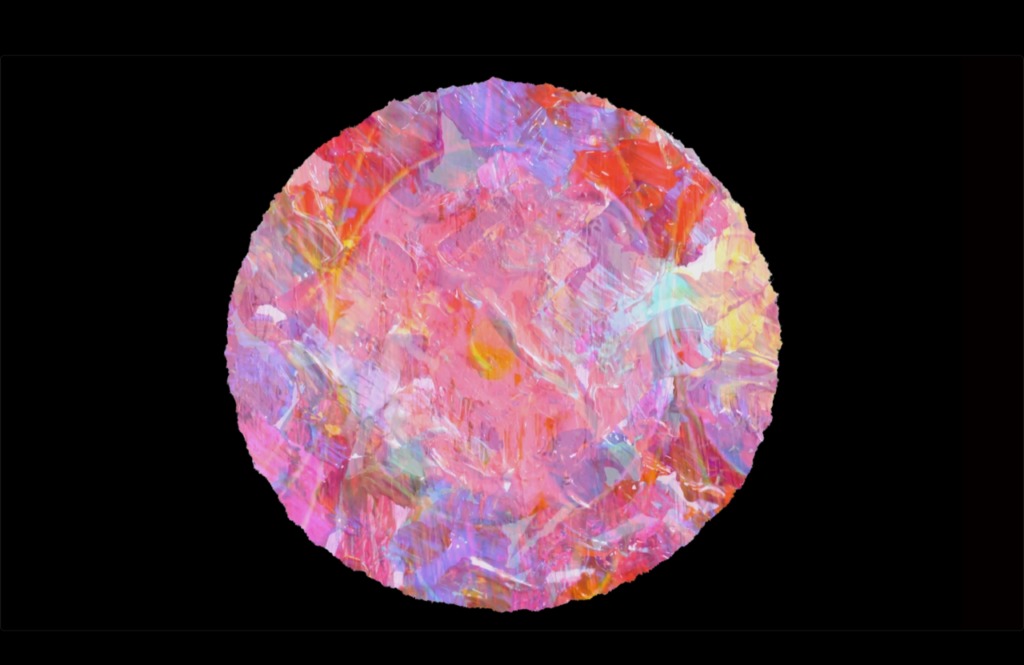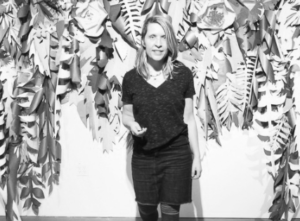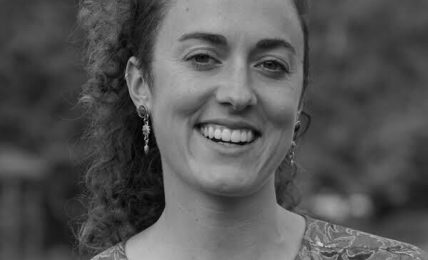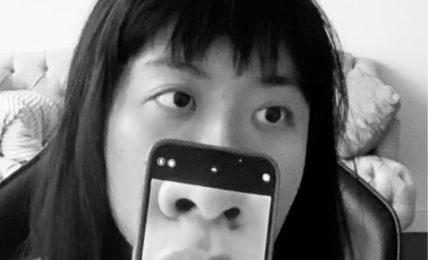Digital America interviewed Jennie Thwing in April of 2024 about her work The Process of Paint.

:::
Digital America: In Process of Paint (2021), you’ve beautifully blended traditional painting techniques with animation and sound to create a dynamic and immersive experience. Could you walk us through your creative process when working on this piece? How did you approach marrying visual art with sound and technology to achieve the desired effect?
Jennie Thwing: My goal in this project was to experiment with paint and movement. I would create a daily animation and then pair sounds with it. Once I had 5 or 6 animations I began to get a feel for the direction of the sound component. Then the animations started to be driven by sound. For example I knew I wanted something rhythmic or a loud boom after a quiet part. Then I would approach the animation with the intention of creating the audio.
DigA: Your current work showcases fascinating arrays of shapes, colors, and movements that seem to convey a sense of perpetual motion and evolution. Could you discuss the significance of the recurring circular motifs, patterns, and movement and/or the significance of the layered compositions that seem to emphasize process over finished product? How do these elements contribute to the overall narrative of the piece?
JT: I love the process of art making. The process lets you focus on creation versus outcome. I went to undergrad for painting. I was always dissatisfied with my work. It was hard not to compare my work to the centuries of paintings that existed. It paralyzed me. I think this is why I was attracted to stop motion. Animation requires so much labor that you forget about the final product. I love that!! I approach my sculptures in the same way I approach my animation. I love working with dense layers and textures. I like experimenting with new materials. I like not knowing what the final work will look like. It’s like opening a present.
DigA: Reflecting on your past works, such as Pest in the Garden (2019), we see themes of nature and humanity intertwined in your art. How do you see these themes evolving or manifesting in Process of Paint? Are there any underlying messages or narratives that you’re exploring in this current piece?
JT: I enjoy creating faux nature. I think it is because I have lived most of my adult life in the city but grew up in the Rocky Mountains. Creating gardens is a way of recreating the past. I can pretend that I am surrounded by nature. We recently moved to wester NY. We have woods behind our house. I am curious to see if it affects my future work. The audio in Process of Paint is ambient and my ambient landscapes are usually heavily influenced by nature.

DigA: You describe Pest in the Garden (2019) as a “love letter to nature” and other works of yours like Love Your Mother (2022) seem to have a similar purpose of being love letters to nature while hinting at deeper societal themes. How do you navigate the balance between creating visually captivating art and subtly addressing complex issues or ideas in your work? Are there specific messages you hope viewers take away from your pieces?
JT: I have never been able to force societal themes into my work. I have tried and failed.
But…I have recently started to create work about motherhood. I have an 8 and 1 year old. Having children has definitely affected every aspect of my life. It feels like I am passing the torch. Which makes me feel both sad and happy. Being a parent has made me a better artist. I have less time so I am more intentional when I sit down to make art. I don’t rely on inspiration to start making. I am also less likely to make work that focuses on myself. You lose part of yourself when you have children. But you gain an understanding of the broader world. And you experience a level of love that you didn’t know you were capable of.
DigA: What are you working on next?
JT: I have started a new animation called Mama. The work focus’s on the trials of being a mother. I am 50% of the way finished with it. I started it in a Pixar Xperiential Story Writing Course. I also want to take a little time to just play in the studio.
:::
Check out Jennie Thwing’s work The Process of Paint.
:::

Artist Jennie Thwing is an artist, animator and educator. She received her BFA from Tyler School of Art and her MFA from the University of Maryland Baltimore County. She teaches animation at Alfred State College in New York.


